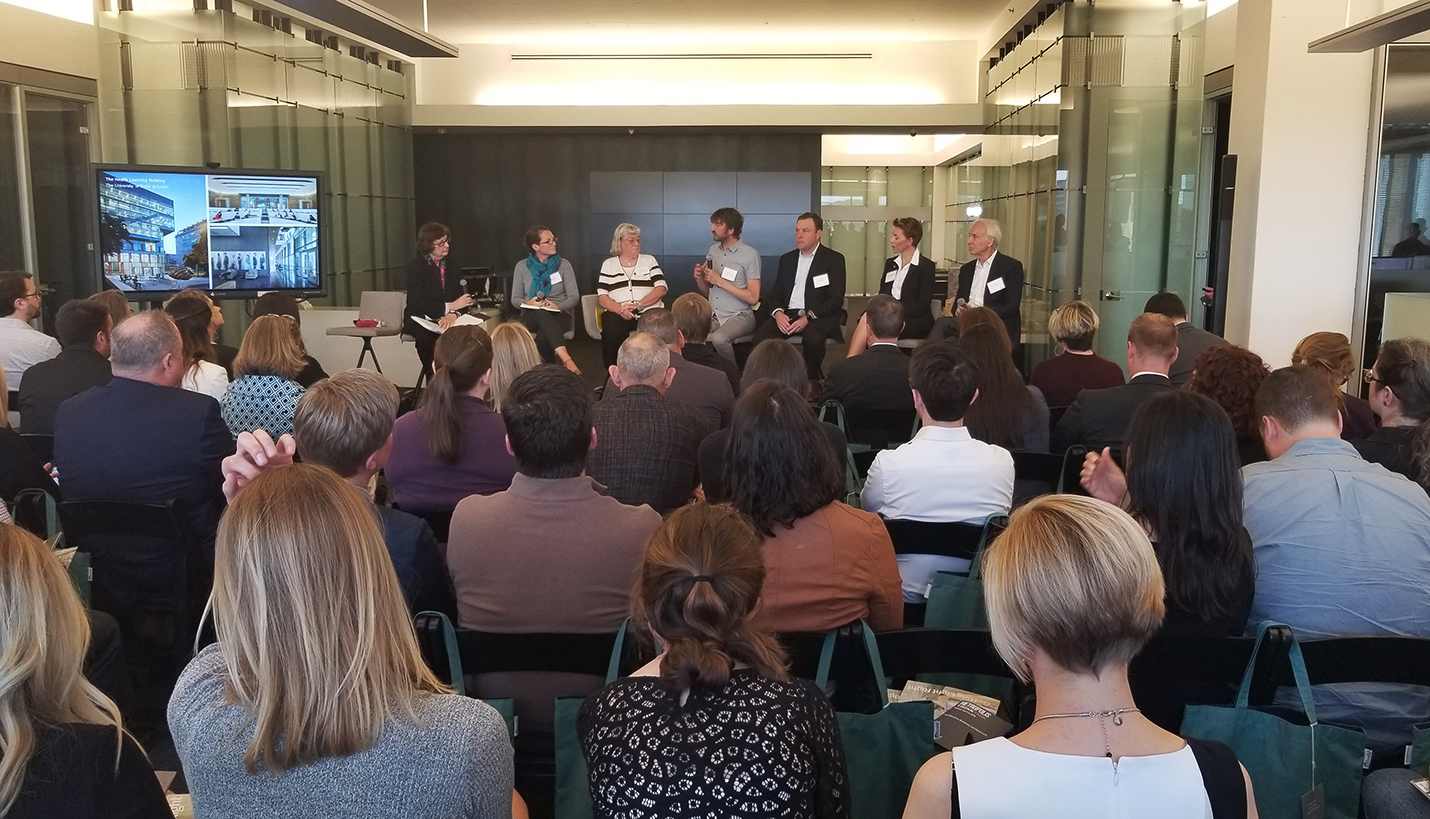

Is Resilience In Communities Important?
Is resilience in communities important? Experts are resoundingly answering “yes!”
According to the Resilient Design Institute, “...social aspects of resilience can be as important as physical responses.” Designers have traditionally considered resilience in the built environment as it relates to environmental catastrophes such as floods, hurricanes and earthquakes. Now, that way of thinking is expanding to examine the influence of the built environment on brain health, emotional and physical well-being, empathy for others and connection to one’s community.
Page hosted a recent discussion on that very topic with clients from recent projects.
The discussion was led by the editor-in-chief of Metropolis Magazine, a national publication that examines contemporary life through design, architecture, interior design and more. The projects examined included a public Montessori school, the first medical school built at a Tier One University in 50 years and a mixed-use urban project that just began construction.
Before the client representatives spoke, Dr. Sam Gosling, a social psychologist at The University of Texas at Austin, gave several examples of how architecture influences people’s sense of community, from dormitory rooms to a long-time personal residence to an elephant habitat at a zoo that allows visitors to feel more connected with the animals.
Sara Cotner, founder and CEO of Magnolia Montessori For All, spoke about the impact of the new Page-designed campus on the students. She described seeing children rush through the classrooms in delight, taking in their new environment and that one clasped his hands and exclaimed, “This is for me!”
Cotner concluded, "Changing the programming, changing the architecture, it changes people."
Sue Cox, Vice Dean of Academics at the Dell Medical School at The University of Texas, noted that out of the inaugural medical school class of 35, more than half the students traveled together during spring break, which she stated is unheard of in upper academia.
She went on to say that students are ranking higher in creativity. More than 95% responded affirmatively to a survey question that they feel more connected to the community in their new environment.
Adam Nims of Trammell Crow Company, a commercial developer, said of the 200 West 6th Street project - previously known as Block 71 - in downtown Austin, that as developers, they recognized the need to give back to and engage with the community by designating a portion of the highly desirable square footage for a community park.
In case anyone started thinking that community resilience can be solely accomplished through cookie cutter design principles, Page Senior Principal Larry Speck noted, "Austin is trying to keep it weird", a good reminder that effective design begins with truly understanding user needs.
Numerous Pagers attended the event, in person or via Facebook Live which was viewed by more than 1,200 people. The discussion was intended to be thought-provoking and as more people watch the video replay, the concept of designing for resilience in the community will certainly become more widely explored. To see a video of the event for yourself, click here.
04/06/2018
Related Posts
- Prepared: Seamless Transition to WFH
- The Essential Steps for Bringing a Facility Project to Market Quickly
- 3/3: Financing the Education of Future Employees
- Electrical Distribution Equipment
- Lean in Design and Construction
- Career Advice for New Hires at Houston X Design Week
- Cooking Up Community Resilience








